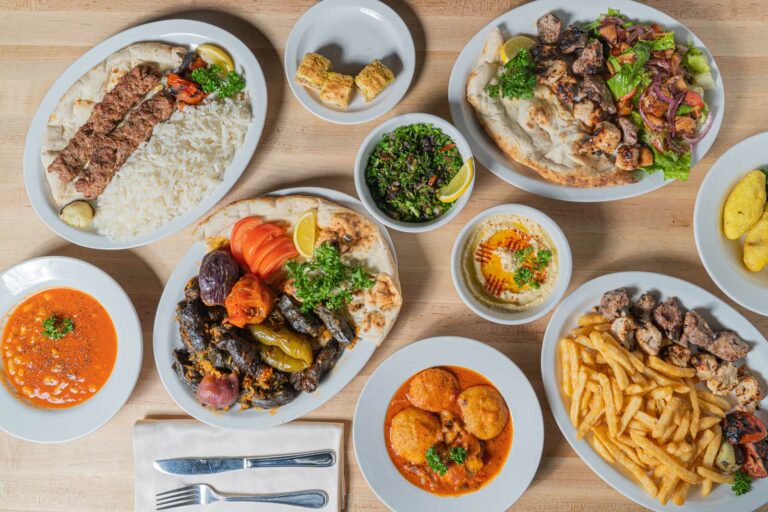Introduction: Turkish Cuisine at a Glance
Turkish cuisine is a combination of various flavors and cultures, which has evolved over centuries. It is a fusion of flavors from the Middle East and Mediterranean regions, along with its unique touch. Moreover, Turkish cuisine is known for its use of various spices, herbs, and vegetables that give it a unique aroma and taste. It is a perfect blend of sweet, savory, and tangy flavors that make it one of the most popular cuisines in the world.
Historical Influences on Turkish Cuisine
Turkish cuisine has evolved over centuries and has been influenced by various cultures. The Ottoman Empire, which ruled Turkey for centuries, played a significant role in shaping Turkish cuisine. During the Ottoman Empire, chefs were brought from different regions of the empire to the royal kitchens, which led to the introduction of new ingredients and cooking techniques. Moreover, the empire’s vast expansion allowed for the exchange of various ingredients with other regions, which further enriched the cuisine.
Middle Eastern Flavors in Turkish Cuisine
The Middle East has had a significant influence on Turkish cuisine. Both cuisines share a common history and culture, which has led to the exchange of ingredients and techniques. Middle Eastern flavors such as sumac, za’atar, and pomegranate molasses are commonly used in Turkish cuisine. Moreover, dishes such as hummus, baba ghanoush, and falafel have become popular in Turkey, adapting to the Turkish palate. The use of nuts, dried fruits, and spices such as cinnamon, cumin, and coriander in dishes like pilafs and stews is also commonly seen in both cuisines.
Mediterranean Flavors in Turkish Cuisine
Turkey’s location on the Mediterranean coast has made it an ideal place for culinary exchange with the Mediterranean region. The Mediterranean diet, which is known for its health benefits, has had a significant influence on Turkish cuisine. Olive oil, which is a staple in the Mediterranean diet, is widely used in Turkish cuisine. Moreover, dishes such as grilled seafood, meze platters, and stuffed vegetables are common in both cuisines. The use of fresh herbs and vegetables like tomatoes, eggplants, and peppers is also prevalent in both cuisines.
Popular Turkish Dishes with Middle Eastern and Mediterranean Influences
Some popular Turkish dishes that have Middle Eastern and Mediterranean influences include:
- Kebabs: a dish of grilled meat, usually lamb or beef, served with rice and vegetables.
- Pide: a Turkish version of pizza, which is made with lamb, cheese, or vegetables.
- Dolma: stuffed vegetables like eggplants, peppers, and grape leaves filled with meat, rice, or vegetables.
- Pilaf: a rice dish made with various ingredients, such as meat, vegetables, and spices.
- Baklava: a sweet pastry made with layers of phyllo dough, nuts, and syrup.
Conclusion: The Fusion of Flavors in Turkish Cuisine
The culinary exchange between the Middle East and Mediterranean regions has had a significant influence on Turkish cuisine. The use of various spices, herbs, and ingredients has resulted in a unique blend of flavors that is widely appreciated around the world. Turkish cuisine is a testament to the rich history and culture of the region, which has led to the evolution of a cuisine that is both delicious and diverse. Whether you are a foodie or a traveler, Turkish cuisine is an experience that you should not miss.

